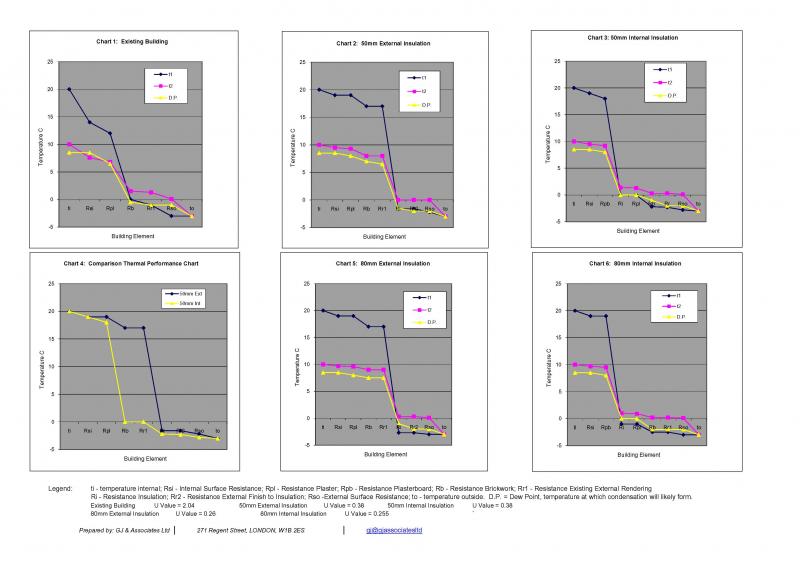I've been a bricklayer since leaving school in 65 and have worked on many old buildings. I can assure you that internal insulation can cause timber rot in old buildings. This is based on experience and fact, not on calculations from a book. The balance in some old buildings will only need a slight change to cause a problem. For example a 9 inch exterior wall with the joist ends in the wall by 4 inches can easily become too damp with the loss of heat from the house. Even on a cavity wall, CWI has caused the bricks to spall in certain instances.@stuart45
Can't agree with your comments about old solid walls being damaged by internal insulation
If you have a solid wall of 60 cm ( U 1.0 ) , internal temp of 20 C and external temp of 0 C then your heat loss in Watts per m2 per hour is
1 x 20 = 20 Watts per m2 and in this case per 0.6 m3 ( taking thickness into account).
Do you really think that 20 W over one hour can put much heat into the best part of 1,000 kg of stone and mortar ?
I have to tell you I don't.
Insulation plus a vapour barrier will prevent the migration of humidity into the wall, where it will at some point condense and lower the insulation value of the wall even more.
Just absolutely wrong.
This does not apply to every old building, but is something that has to be considered.



